Get PeakVisor App
Sign In
Search by GPS coordinates
- Latitude
- ° ' ''
- Longitude
- ° ' ''
- Units of Length

Yes
Cancel
Share ×

Scan the QR code and open PeakVisor on your phone
❤ Wishlist ×
Choose
Delete
The Spearhead Range is a collection of peaks located in southwest British Columbia, Canada. They are a part of the Canadian Coast Mountains. The range has 13 named peaks, the highest and most prominent of which is Tremor Mountain with 2,691 m (8,829 ft) of elevation and 1,263 m (4,144 ft) of prominence. Other notable peaks in the range include Blackcomb Peak and The Spearhead, both of which are part of the Whistler Blackcomb Ski Resort.

Located along the west coast of British Columbia, Canada, the Spearhead Range straddles the Squamish-Lillooet and the Fraser Valley regional districts. The closest communities to the range are Whistler, which is known for its alpine skiing and mountain biking, and Squamish which is known for its rock climbing and bouldering routes.
The Spearhead Range is situated within the Coast Mountains, which dominate the skyline and the west coast of Canada. The southern end of the Coast Mountains is the Pacific Ranges, which contain the Garibaldi Ranges. The Spearhead Range is in turn part of the Garibaldi Ranges, which are centrally located within the Pacific Ranges.
The most famous peaks in the Spearhead Range are Blackcomb Peak and The Spearhead, both of which are part of the world-famous Whistler Blackcomb ski resort. Whistler Blackcomb is the largest ski resort in North America. It was home to the alpine events of the 2010 Olympics, which were held in Vancouver and Whistler.
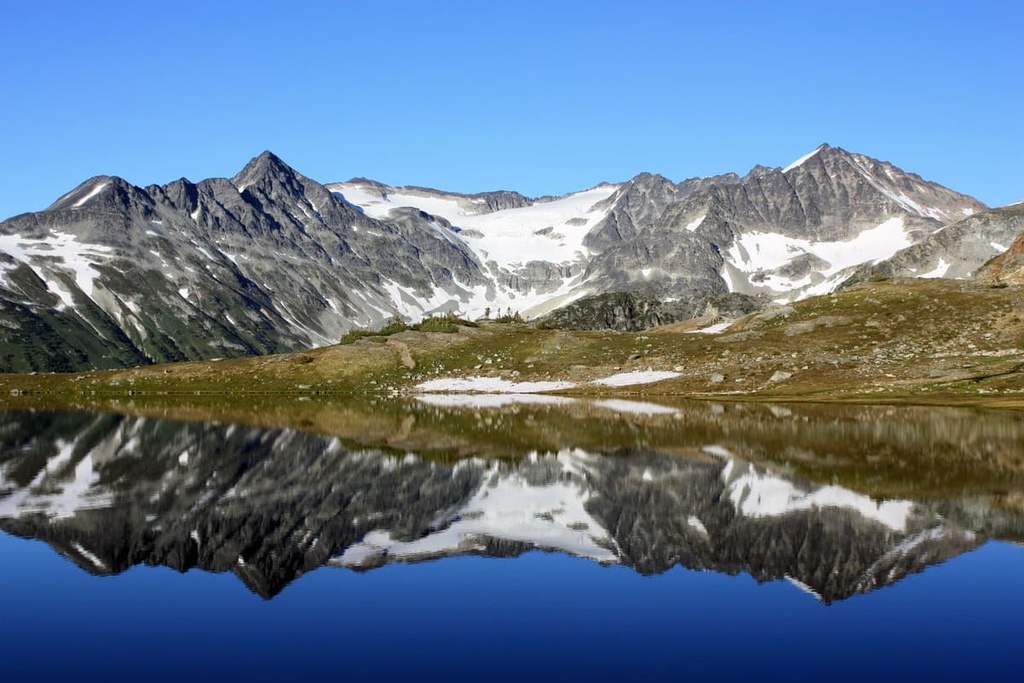
Several of the peaks of the Spearhead Range lay within Garibaldi Provincial Park and Blackcomb Glacier Provincial Park. Other notable parks and conservation areas that are situated near the range include:
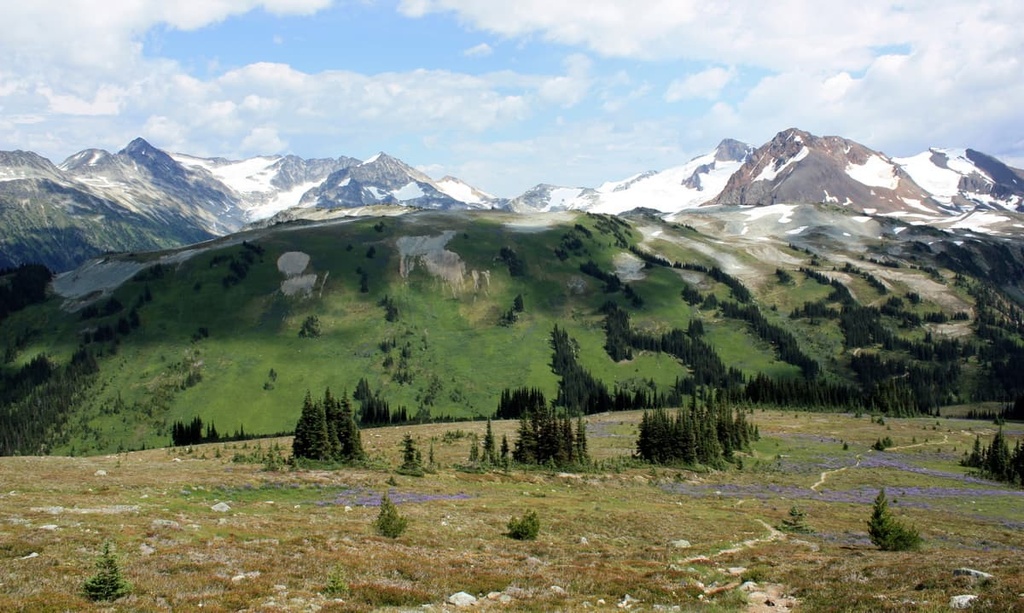
When the supercontinent of Pangea started breaking apart about 300 million years ago, North America slowly moved west. As the continental plate of North America moved west, it collided with and overrode the denser tectonic plates of the Pacific Ocean; however, there were many buoyant volcanic island arcs of varying age that rode on the Pacific plates.
Soon afterward, as the Pacific tectonic plates subducted beneath the continent, these island arcs were skimmed off their plate and attached to the coastal margin of the North American plate. Most of British Columbia is made from the accreted terranes of the island arcs that originally formed in the Pacific Ocean.
The Canadian Coast Mountains formed from one of the final volcanic island arcs to be accreted to the edge of British Columbia. About 70 percent of the Coast Mountains are granitic in composition, having formed from ancient volcanoes that have since been heavily eroded.
Made of sharp, pointed peaks that resembled spearheads to Don and Phyllis Munday, who named the range, the Spearhead Range has a mixed geology dominated by granites and gneisses.
The range is a subrange of the Garibaldi Range which also includes the Garibaldi Névé, McBride Range, Fitzsimmons Range, Golden Ears, Misty Icefield, and the Bastion Range.
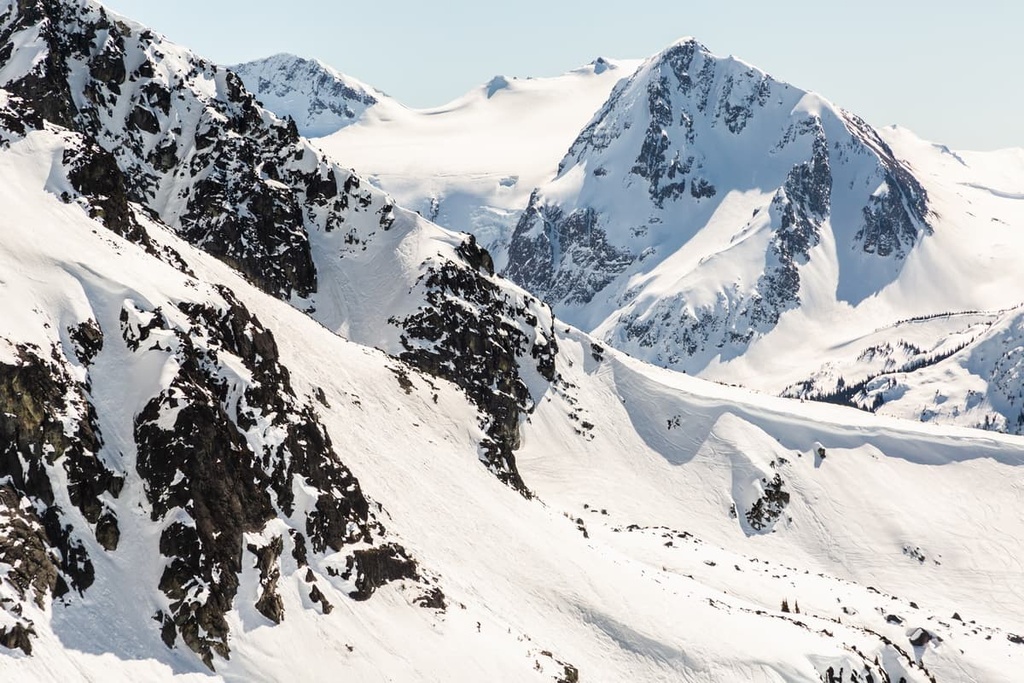
The Garibaldi Range is part of the Garibaldi Volcanic Belt. This volcanic belt is the northernmost segment of the Cascade Volcanic Arc, which includes Mount St. Helens and Mount Baker in the Cascades of the US state of Washington.
Most of the volcanoes of the belt are dormant stratovolcanoes and subglacial volcanoes; however, the Spearhead Range is located adjacent to the Garibaldi Volcanic Area and does not contain any younger volcanoes.
Most of the Spearhead Ranges lay within the Coastal Mountain-heather Alpine zone, with the perimeter slopes and valleys transitioning through a subalpine ecology and ending in a montane environment.
The alpine in the range features a deep, warm, maritime snowpack that is ideal for the ski hills that occupy one end of the range. During the summer, mountain heather communities dominate the alpine below the rocky peaks.
The subalpine in the Spearhead Range is a relatively thin band of the Mountain Hemlock Zone that is dominated by forests of mountain hemlock and amabilis fir. The transition from the alpine to the subalpine is gradual and presents a beautiful mosaic of meadows and scattered trees that become a dense forest at lower elevations.
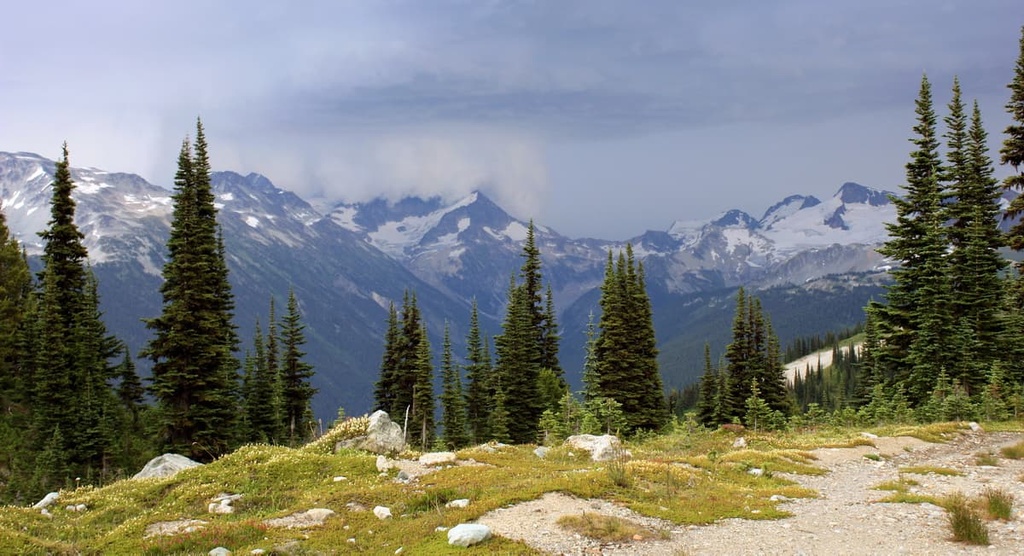
The slopes in the range are filled with forests of Engelmann spruce, subalpine fir, mountain hemlock, and yellow cedar. These are part of the Engelmann Spruce-Subalpine Fir Zone, which typically has much cooler temperatures than what's found in the rainforests’ valley bottoms.
The lowest valleys in the range are part of the temperate rainforests of British Columbia, which are in turn part of the Coastal Western Hemlock Zone. This zone is dominated by red cedars, western hemlock, alder, and big leaf maple.
Grizzly and black bears, elk, moose, cougars, deer, wolves, coyotes, foxes, and many more mammals inhabit the Spearhead Range. Mountain goats and bighorn sheep frequent the alpine areas of the range.
The marmots that are common in the Fitzsimmons Ranges are also present in the Spearhead Range. You’ll likely hear their whistles while hiking and perhaps you’ll have the opportunity to see some, too.
In addition to the many mammals present in the range, there are several species of woodpeckers, owls, eagles, and hawks that inhabit the rugged peaks of the Spearhead Range. However, the year-round popularity of the Whistler-Blackcomb Resort has likely diminished the populations of some of the wildlife in the range.
About 10,000 years ago as the ice had mostly melted from the region, vegetation began to grow and animals began to inhabit the Coast Mountains and the Spearhead Range. The arrival of humans to the area is marked by obsidian mines discovered in what is now Garibaldi Provincial Park that have been used for over 10,000 years.
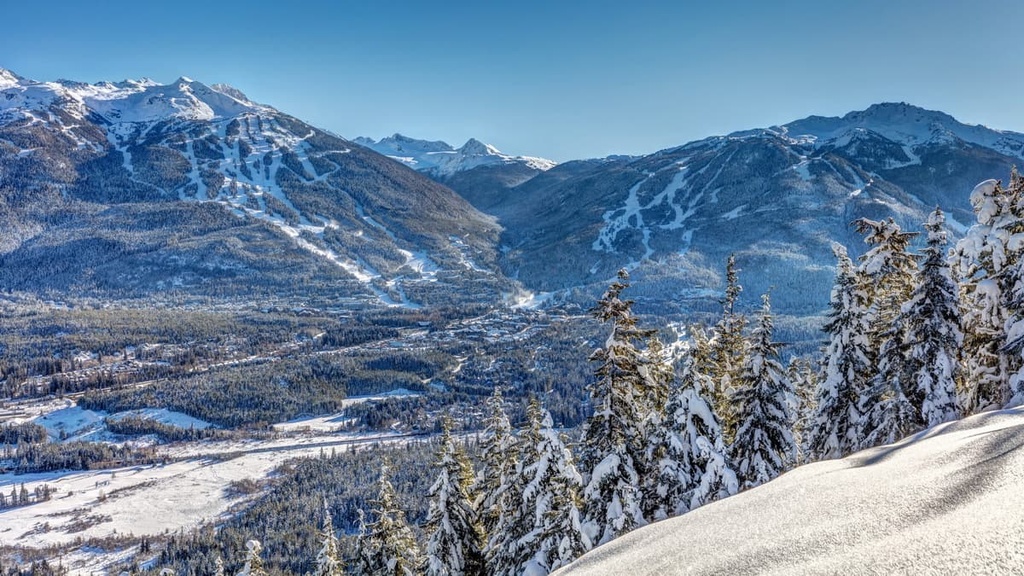
The range is part of the traditional territory of the Squamish, Lil’wat, and St’át’imc First Nations. The region’s salmon have been harvested for generations and the cedar trees have been harvested to make buildings, clothing, and tools.
The ancestors of these contemporary First Nations were likely the people who first mined the obsidian in what is now Garibaldi Provincial Park in order to make razor-sharp blades and fine jewelry.
According to other theories, the region’s many contemporary First Nations supplanted a previous culture who first occupied the territory, and it was they, who first lived in these mountains mined the obsidian. Either way, Garibaldi obsidian was long a valuable trading item. The obsidian from the region has been found in archeological sites in British Columbia and Washington.
During the 1860s, thousands of people rushed into British Columbia in search of gold. While most followed the Douglas Route up Lillooet Lake, others landed in Howe Sound and prospected in the creeks as they advanced through the mountains.
As prospectors made their way from the coast and through the mountains, the beauty of the area was duly noted. Settlers began arriving at the base of the Spearhead and Fitzsimmons ranges by the beginning of the twentieth century and quickly recognized the potential for tourism to the area.
The resort community of Whistler and its world-famous ski resort grew from very modest beginnings in the early twentieth century. The accessibility that came with the Pacific Great Eastern Railway in 1914, the spectacular setting, and the excellent fishing all made the Whistler area the popular tourist resort that it is today.
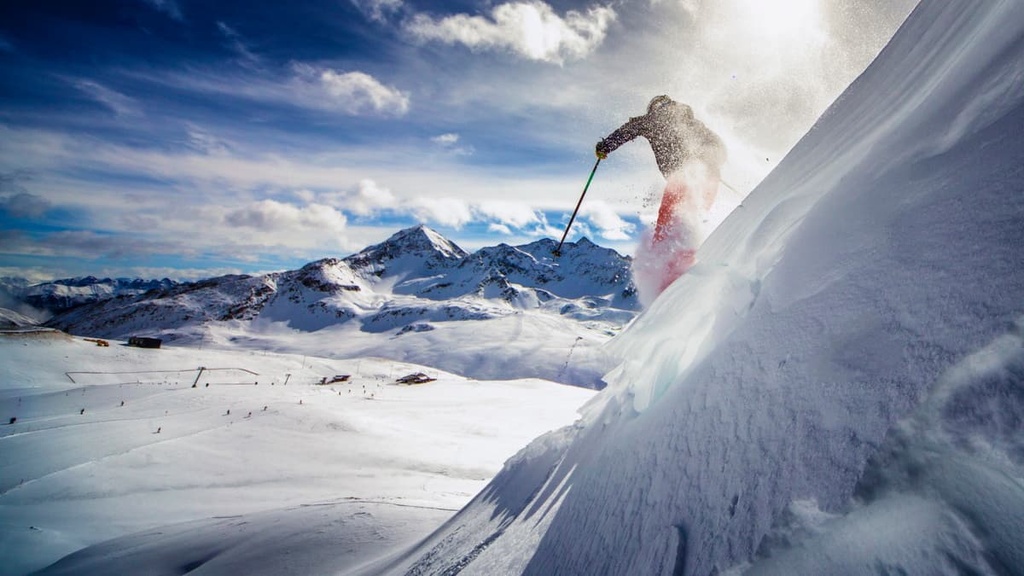
Ski lifts were first installed in the area in 1965 in an attempt to attract the Olympic bid for 1968; however, the Olympics weren’t held at Whistler-Blackcomb until 2010.
Before 1997, Whistler and Blackcomb were two separate ski resorts. That year, the ownership of the resorts was amalgamated into one area. Combined, Whistler Blackcomb is the largest ski area in North America with 8,171 acres (33 square kilometers) of terrain.
The growth of the ski resort on Whistler and Blackcomb is the region’s main historical event of the past century; however, it’s worth noting that early European settlers were frequently employed in mining and forestry. Mining in the area has since subsided as the provincial government focused more on allowing the expansion of the ski resort as opposed to developing mining claims.
Located near the Lower Mainland of British Columbia and among the stunning mountains of the Canadian Coast Mountains, the Spearhead Range has a variety of attractions for visitors to enjoy.
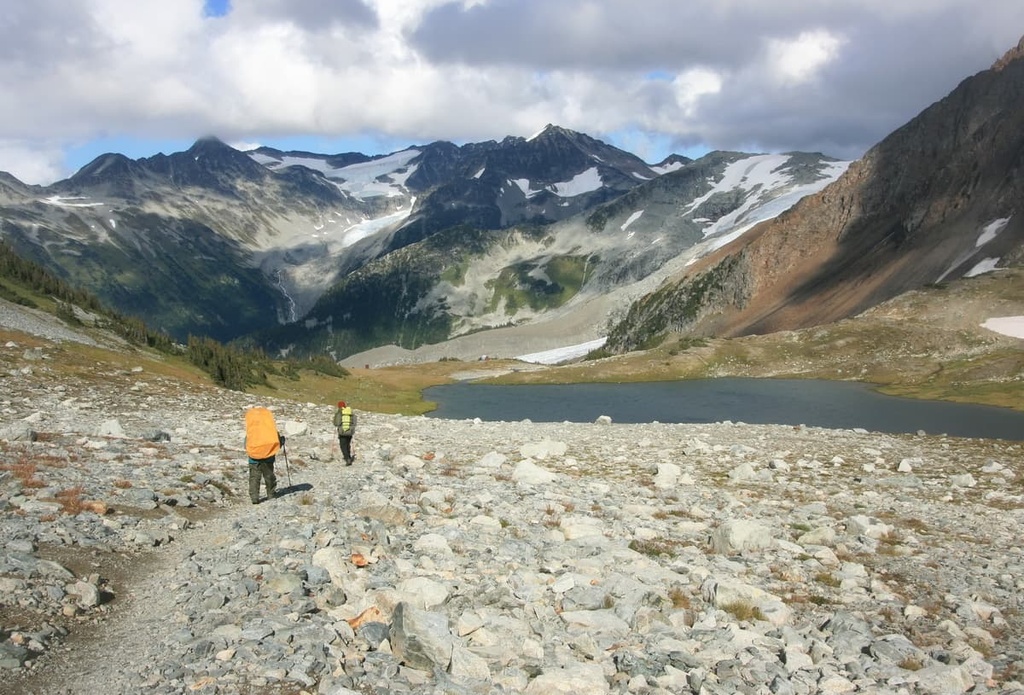
Named for their spearhead shaped peaks, the range has a famous ski resort, is part of two provincial parks, and features some incredible backcountry hikes. The following are some of the main attractions of the range.
Blackcomb Glacier Provincial Park was created as a separate park from Garibaldi Provincial Park in 1990. The park offers opportunities for alpine hiking in the summer and backcountry skiing and snowboarding in the summer.
The main ways to access the park is by taking the lifts from the base of Whistler and Blackcomb Mountain. There are many hikes into the park; however, the summit of Blackcomb Mountain is the most popular destination. From the top of the lifts, there is a grueling 4.5 (2.7 mi) trail to the summit. If you want to hike from the base of the mountain, doing so adds an extra 5 km (3.5 mi) each way to your journey.
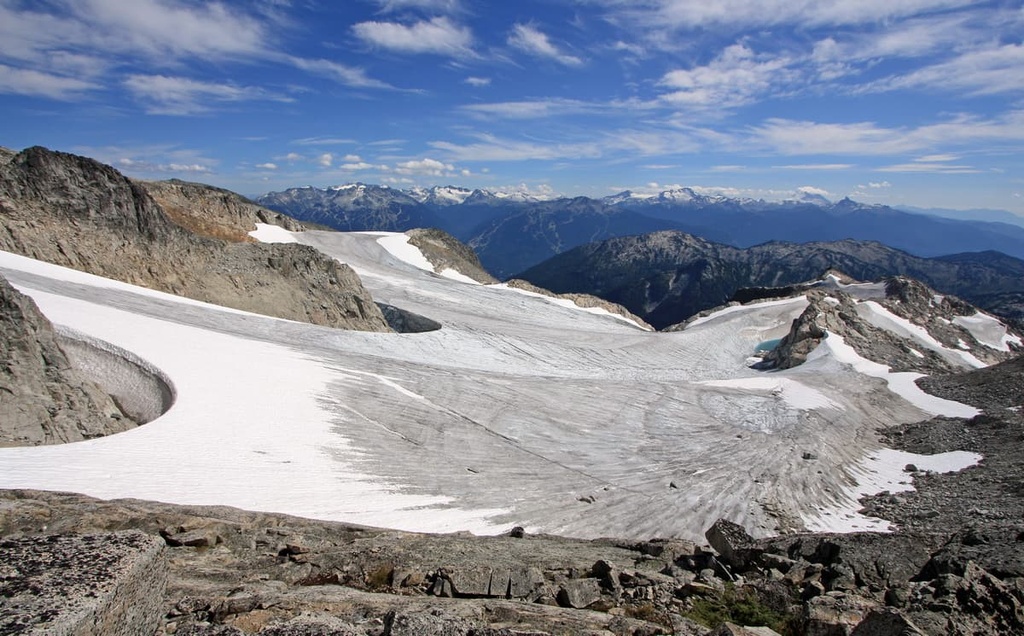
With over 2 million visitors a year, Whistler Blackcomb Ski Resort is the largest ski resort in North America. It consists of two mountains, Whistler Mountain and Blackcomb Mountain, though either mountain alone would land in the top five of North America’s largest ski hills.
The resort has 3,306 ha (8,171 acres) of skiable area that cover the ridges of Whistler Mountain and Blackcomb Mountains. It is serviced by many gondolas and dozens of lifts. The resort has incredible winter facilities, and it is now a year-round destination that also offers world-class mountain bike terrain.
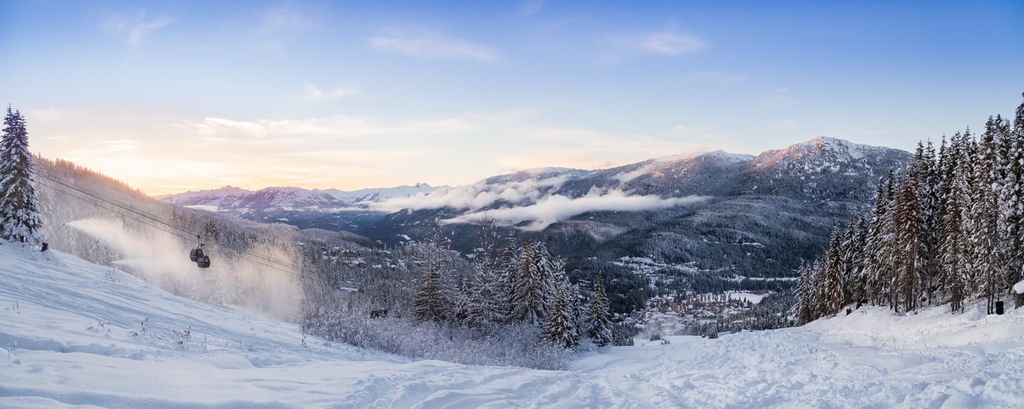
The Spearhead Range is part of Garibaldi Provincial Park, which is named for one of its most iconic peaks—Mount Garibaldi. Mount Garibaldi is a volcano that erupted through the Pleistocene ice sheet about 13,000 years ago.
The park has scenic vistas, abundant wildlife, rugged mountains, shimmering lakes and rivers, and 90 km (54 mi) of hiking trails.
A few of the best trails in the park include the Garibaldi Lake Trail, Panorama Ridge, Elfin Lakes, and Wedgemount Lake. Some of the most popular peaks to summit in the park include Mount Weart, Wedge Mountain, Mount Price, Mamquam Mountain, and Overlord Mountain.

The Spearhead Range is located near the densely populated Lower Mainland of British Columbia, Canada. As a result, it is an integral part of the outdoor experience for locals in the region.
As it contains part of the Whistler Blackcomb ski resort, over two million people visit the range annually. The following are some of the closest communities and major cities to the range.
Located about 120 km (72 mi) to the south of the Spearhead Range, Vancouver is a major city situated at the south end of the Pacific Ranges along the Fraser River.
Vancouver is the largest city in British Columbia, and has many cultural attractions to check out, including libraries, museums, performing arts, art galleries, and a vibrant nightlife. There are also annual festivals in the city, such as the Pacific National Exhibition.
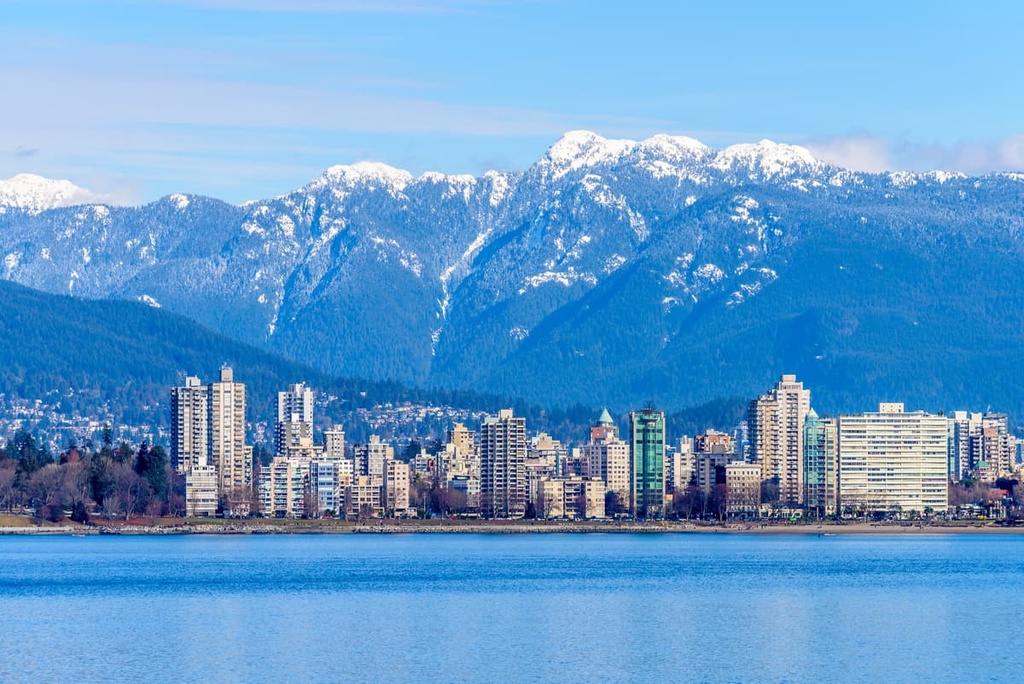
In the city, there are many great paths to walk, especially in Stanley Park, which is one of North America’s largest urban parks. Outside of the city, some popular hikes around Vancouver to check out include St. Marks Summit, Quarry Rock, the Grouse Grind, Pacific Spirit Regional Park, Burnaby Lake Park, and the Norvan Falls Trail.
Additionally, there are many provincial parks nearby that offer day hiking and backcountry opportunities. Some of the amazing provincial parks that are easily accessible from the Lower Mainland include Garibaldi Provincial Park, Pinecone Burke Provincial Park, Golden Ears Provincial Park, and Mount Seymour Provincial Park.
Whistler is a resort community that is situated just to the west of the Spearhead Range. It is the main resort community for the Whistler Blackcomb ski area.
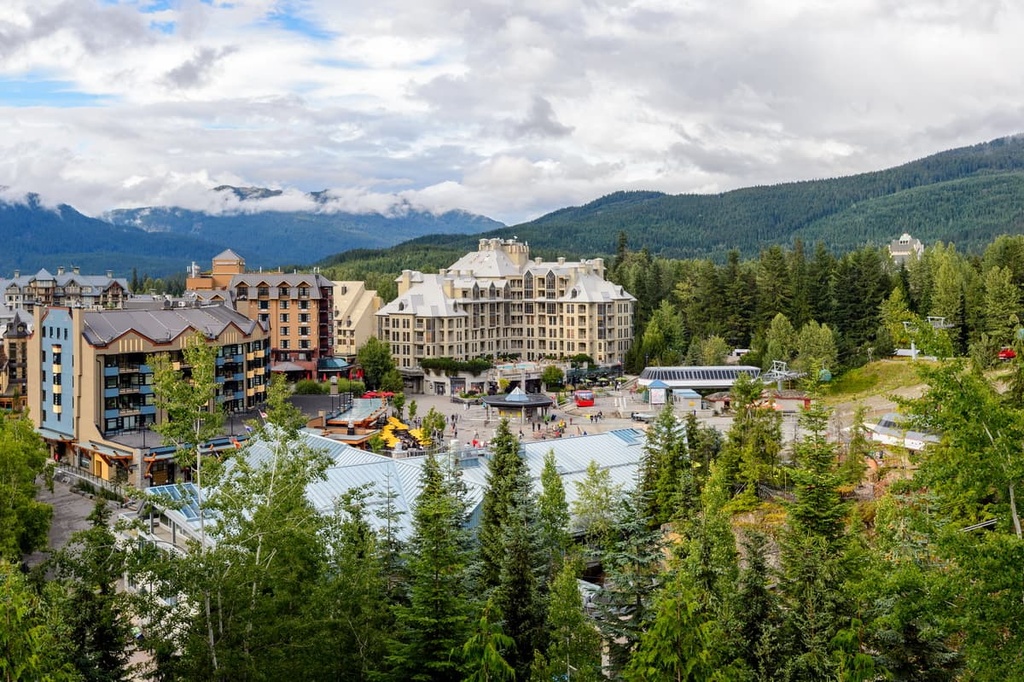
Located about 120 km (72 mi) away from Vancouver, Whistler receives over two million visitors every year. Most visitors come for alpine skiing and snowboarding during the winter; however, downhill and mountain biking are also popular at the Whistler Blackcomb Resort during the summer months.
During the winter, the town is filled with skis and snowboards, as visitors flock to one of the largest ski resorts in North America. During the summer, the town is still full of life; however, mountain bikes and hiking boots are on the trails, instead.
Some of Whistler’s popular hikes include the Singing Pass Trail and the High Note Trail to the top of Whistler Mountain. Additionally, one hike that you don’t want to miss is the short hike to the train wreck at the south end of town.
The community of Squamish is a charming town situated at the north end of Howe Sound. The town is situated along the Sea to Sky Highway in British Columbia, which connects the Lower Mainland to the skiing on Whistler and Blackcomb Mountains. While situated only about 60 km (36 mi) to the south of the Spearhead Range, most of Squamish’s visitors come during the warmer months.
Like Whistler, Squamish is a popular destination for tourists in search of outdoor adventure and recreation. However, while Whistler is known for its ski hills, Squamish is world renowned for its thousands of climbing and bouldering routes. Indeed, climbing is a very popular sport around Squamish and there are some well renowned climbing areas within the city limits.
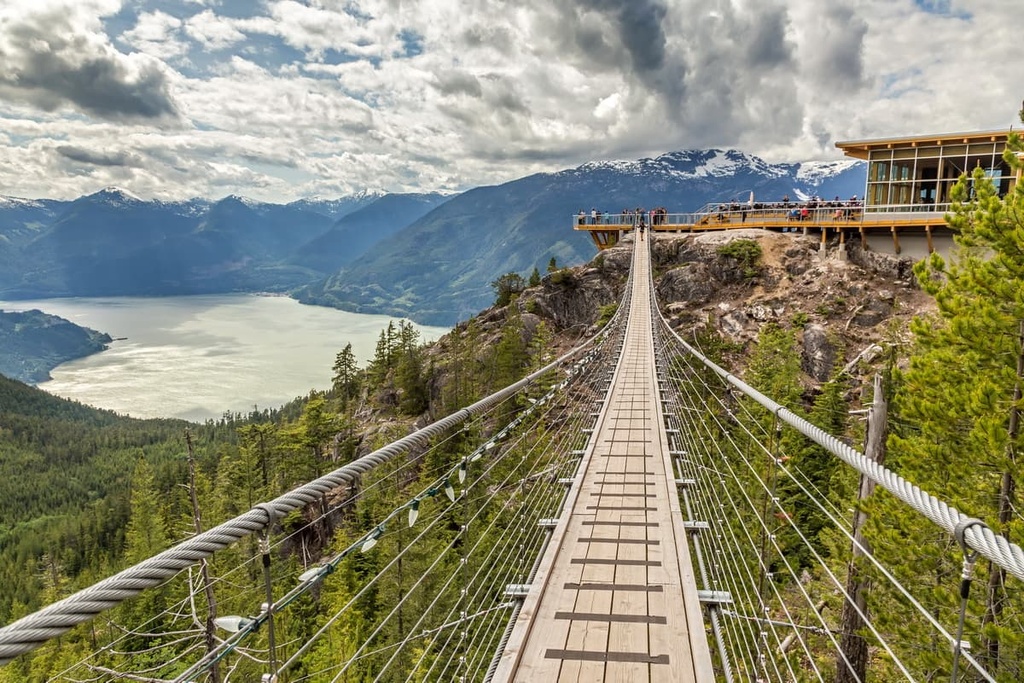
Some of the climbing attractions include the granite massif called the Stawamus Chief, which has over 300 climbing routes. There are also Shannon Falls, Murrin Park, The Malamute, and the Smoke Bluffs, which contain an additional 1,500 routes. Additionally, the area is home to over 2,500 bouldering problems that are published in local guidebooks.
Squamish is also a popular destination for windsurfing and kiteboarding, ultra-trail running, visiting Shannon Falls, river-rafting on the Squamish and Elaho Rivers, snowmobiling, hiking, mountaineering, and backcountry skiing.
Explore Spearhead Range with the PeakVisor 3D Map and identify its summits.








